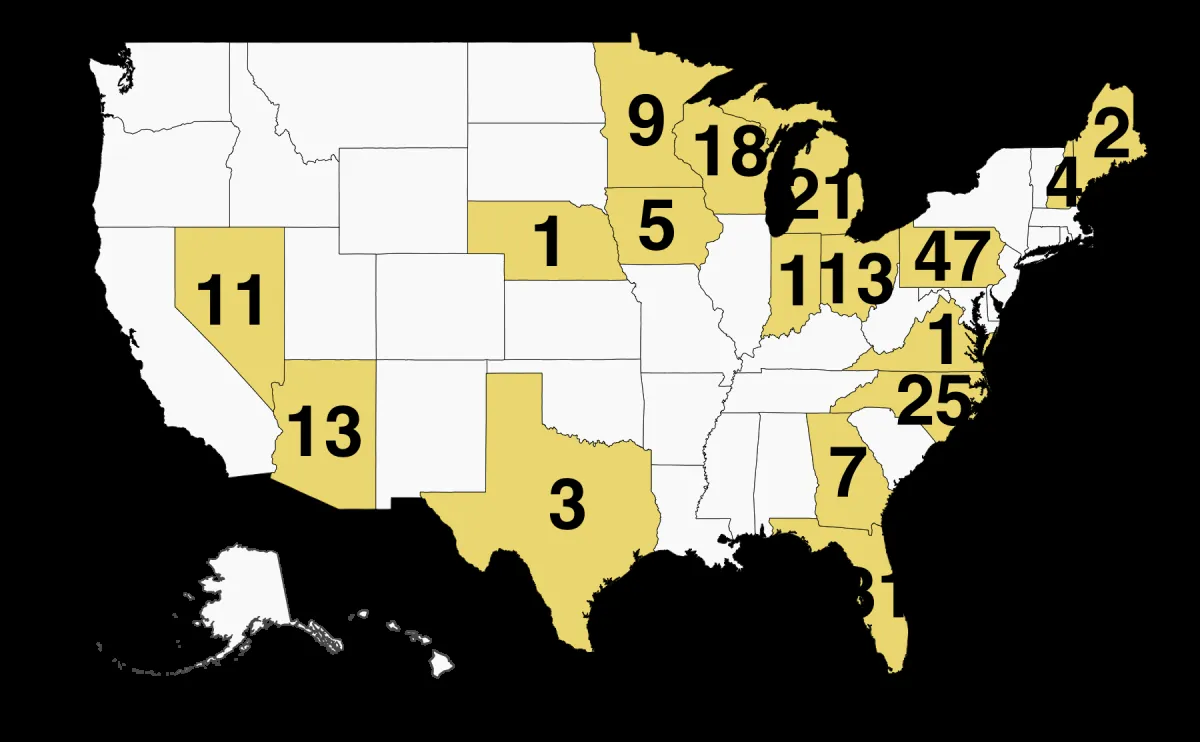In the final stretch of the presidential race, Kamala Harris and Donald Trump find themselves in a closely contested battle, despite significant differences in campaign resources and strategies. With just a month until Election Day, polls in key battleground states show the candidates nearly tied, highlighting the unpredictable nature of this election.
Harris's campaign has deployed a formidable arsenal of resources, outspending Trump's operation by a considerable margin. Between the end of the Democratic convention and October 4, 2024, Harris invested $263 million in advertising, nearly 2.5 times Trump's $109 million. This financial advantage extends across various campaign aspects, including staff size, volunteer networks, and digital advertising.
The scale of Harris's financial edge surpasses anything Trump faced in his previous White House bids. When combining campaign and national party spending, Harris's lead over Trump is more substantial than those held by Hillary Clinton in 2016 and Joe Biden in 2020. This advantage is particularly evident in digital advertising, where Democrats have spent nearly three times as much as Republicans on platforms like Facebook and Google.
Despite this massive spending disparity, the race remains remarkably close in crucial swing states. A Washington Post average of public state polling reveals Harris leading by slim margins in Wisconsin, Michigan, and Pennsylvania, while Trump holds a slight edge in Arizona and Georgia. North Carolina and Nevada are virtually tied, with all states falling within the margin of error.
The Electoral College system, which determines the outcome of U.S. presidential elections, underscores the importance of these battleground states. Campaign strategies often differ between urban and rural areas within these states, as both candidates seek to maximize their appeal to diverse voter demographics.
Trump's campaign, while acknowledging the spending gap, remains confident in their position. They argue that Trump's ability to generate free media attention through news coverage and social media helps offset the advertising shortfall. James Blair, Trump's political director, stated:
"If money was the ultimate determiner of the winner in national elections, Hillary Clinton would be finishing her second term as president. Our job is to find a way to win regardless, and I am quite confident that we have the path to do that and the resources that we need to do that."
However, some Republicans close to Trump express concern that if polling remains tight, the structural gap could prove decisive in the final weeks. They urge increased spending on get-out-the-vote efforts, recognizing that turnout disparities could be crucial in such a close race.
Both campaigns are focusing on the small percentage of undecided voters in key states. Harris's team believes they have an advantage in reaching more habitual voters, while Trump's campaign argues that Harris faces a greater challenge in mobilizing sporadic voters.
The ground game efforts of both campaigns are intensifying. Harris's team claims to have 330 offices and over 2,400 staff, while Trump's campaign reports more than 300 "Trump Force 47" offices with hundreds of paid staffers. Additionally, outside groups are actively involved in field work, though their efforts are harder to track.
As the campaign enters its final phase, the use of data analytics, social media strategies, and evolving polling methodologies play crucial roles. The impact of celebrity endorsements, the influence of political action committees (PACs), and the emerging use of artificial intelligence in campaigning add further complexity to the electoral landscape.
With voter turnout typically ranging from 50% to 60% in U.S. presidential elections, both campaigns are intensifying their efforts to mobilize supporters and sway undecided voters. The prevalence of early voting and mail-in ballots adds another dimension to their strategies, as they seek to secure votes well before Election Day.
As November approaches, the question remains whether Harris's substantial spending advantage will translate into electoral success or if Trump's unconventional campaign style will once again defy expectations. The outcome may ultimately hinge on the effectiveness of each campaign's ground game and their ability to motivate voters in key battleground states.
